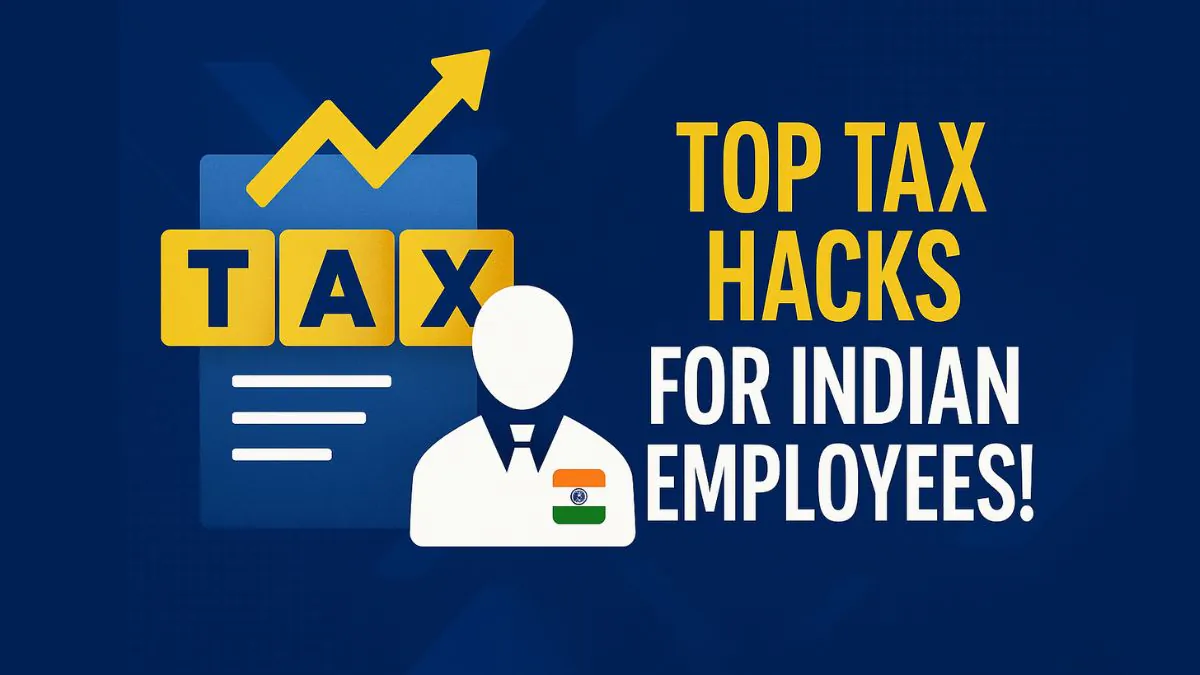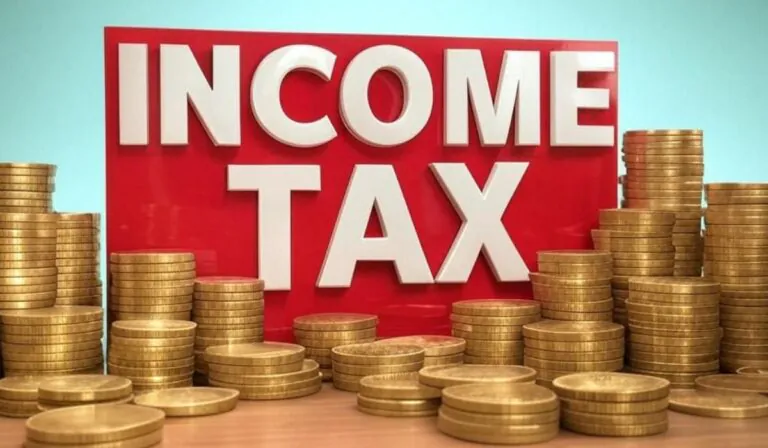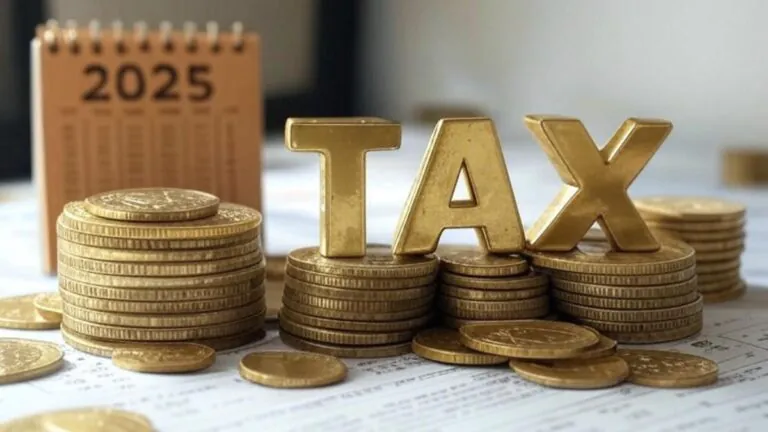Tax Saving Options for Salaried Employees in India

Table of Contents
ToggleShare this article ↷
WellReturns is now on WhatsApp!
Get instant updates and expert tips.
As a young salaried employee in India, seeing your paycheck shrink due to taxes can feel like a satta to the wallet. If you’re under 30, just kicking off your career, every rupee matters-whether it’s for that shiny new phone, a quick trip to Manali, or building a solid financial future.
The good news? There are tax saving options for salaried employees that let you keep more of your paisa. This article insights you best tax saving options for salaried employees under 30 in India, tailored for personal finance with practical.
Read also: Save Up to ₹12 Lakh Tax-Free – Income Tax
Why Tax Saving Matters for Young Employees
In your 20s, you’re probably balancing rent, EMIs, or the occasional Swiggy splurge. Taxes can gobble up 20-30% of your income, depending on your slab. For someone earning ₹8 lakh a year, that’s ₹1-2 lakh gone!
The Income Tax Act, 1961, offers deductions to lower your taxable income, saving thousands while growing your wealth. But with so many options, where do you start? Let’s make it simple.
Top Tax Saving Options for Salaried Employees
- Section 80C: The Baap of Tax Savings
Section 80C is the go-to for tax saving options for salaried employees, allowing deductions up to ₹1.5 lakh on investments like:
- Employee Provident Fund (EPF): Your employer deducts 12% of your basic salary for EPF, which is tax-deductible. It’s a safe bet for retirement savings.
- Public Provident Fund (PPF): A government-backed scheme with a 15-year lock-in, PPF offers ~7% tax-free interest. Start with just ₹500 yearly. Great for low-risk lovers.
- Equity-Linked Savings Scheme (ELSS): For the best tax saving options for salaried employees under 30 in India, ELSS is zabardast. These mutual funds invest in stocks, have a 3-year lock-in, and can deliver 12-15% returns. Risky but perfect for young investors.
- Life Insurance Premiums: Paying for yourself or family? Claim deductions, but ensure the sum assured is 10 times the premium for max benefits.
Pro Tip: Blend ELSS for growth and PPF for safety to hit the ₹1.5 lakh cap. Check Income Tax India for details.
- Section 80D: Health Insurance for Family
Medical bills can burn a hole in your pocket faster than you can say “doctor.” Under Section 80D, claim up to ₹25,000 for health insurance premiums for yourself, spouse, or kids, and another ₹25,000 for parents (₹50,000 if they’re seniors). It’s protection plus tax savings-double dhamaka.
Real Story: Arjun, a 27-year-old coder in Bengaluru, saved ₹12,000 in taxes by insuring himself and his parents. He used the savings for a new gaming console!
- House Rent Allowance (HRA): Save on Kiraya
Renting a flat? HRA, part of your salary, can be partially or fully tax-exempt under Section 10(13A). The exempt amount is the least of:
- Actual HRA received
- 50% of basic salary (metros) or 40% (non-metros)
- Rent paid minus 10% of basic salary
Note:
Employees must submit the PAN details of their house owner if the annual rent paid exceeds ₹1 lakh.
This HRA exemption is available only to individuals who opt for the old tax regime.
If an individual chooses the new tax regime, the entire HRA received becomes taxable, and no exemption can be claimed.
Submit rent receipts to your employer or claim via ITR. See CBDT guidelines for clarity.
- National Pension System (NPS): Retirement Ka Plan
NPS is a government-backed pension scheme. Under Section 80CCD(1B), you get an extra ₹50,000 deduction beyond the ₹1.5 lakh 80C limit. It’s market-linked, offering 10-12% returns but locked until 60. Ideal for long-term planners.
Data Point: Per the PFRDA, NPS subscribers jumped 20% in 2024, with millennials driving growth.
- Standard Deduction: Free Ka Cash
Every salaried employee gets a flat ₹50,000 deduction under the old tax regime-no paperwork needed. Just declare it in your ITR. It’s like a Diwali dhamaka from the government!
Comparison of Tax-Saving Options

Insight: ELSS is ideal for young employees due to its short lock-in and high returns, but diversify with PPF for stability. NPS suits those eyeing retirement early.

Old vs. New Tax Regime: Kya Hai Better?
The old regime offers more deductions but higher rates. The new regime has lower rates but fewer deductions. For young employees investing in ELSS, PPF, or insurance, the old regime usually saves more. Use an Income Tax Calculator to compare.
Read also: New Tax Slabs FY 2025-26 – Old vs. New Regime Savings
File ITR for Tax Planning – Tax saving options for salaried employees
For most salaried individuals, their monthly salary is the main source of income. However, interest earned from savings and investments in tax-saving instruments can help reduce their overall tax burden. It’s important to consider these while filing your Income Tax Return (ITR).
How to File ITR for Salaried Employees:
The ITR filing process begins by selecting the correct ITR form based on your income. While filing online, you’ll need to report:
- Your gross salary
- Allowances received
- Investments made for tax savings
- Income from other sources (like bank interest)
Documents Required for ITR Filing:
To ensure a smooth filing process, keep the following documents ready:
- Form 16 – Provided by your employer
- Form 26AS – Tax credit statement
- Bank account statements – For all your savings accounts
- Interest or TDS certificates – From banks or financial institutions
Key Takeaways
- Maximize Section 80C: Combine ELSS and PPF for growth and safety.
- Health Insurance: Save up to ₹50,000 under Section 80D.
- Use HRA and NPS: Cut taxes with rent exemptions and extra deductions.
- Plan Early: Start investing at the financial year’s start to avoid March madness.
Tax saving isn’t just about saving paisa-it’s about building a mast future. Which tax saving options for salaried employees are you trying? Drop your thoughts in the comments or ask for customized tips.
Let’s make personal finance less jhanjhat and more mazedar!
Disclaimer
Well Returns is not a financial adviser. The content provided here is for informational purposes only and is intended to offer a brief overview and general knowledge. It is not a substitute for professional financial advice. Please consult a qualified financial adviser before making any financial decisions or investments.
Related FAQs
ELSS, PPF, EPF, and health insurance under Sections 80C and 80D are excellent. ELSS is ideal for its short lock-in and high returns, while PPF ensures safety.
Yes, you can claim HRA exemptions for rent, a ₹50,000 standard deduction, and leave travel allowance (LTA) for domestic travel, without investments.
NPS offers an additional ₹50,000 deduction under Section 80CCD(1B), beyond the ₹1.5 lakh 80C limit, reducing taxable income while securing retirement.






